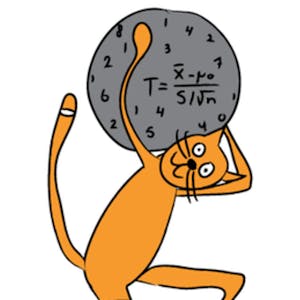Inferential Statistics is a comprehensive course offered by the University of Amsterdam, delving into the principles of significance testing, p-values, confidence intervals, and various statistical tests. This course equips learners with the skills to interpret data, make inferences, and perform statistical tests using freely available software.
Whether you are new to statistical testing or seeking to enhance your knowledge, this course covers a wide range of topics such as comparing two groups, categorical association, simple and multiple regression, analysis of variance, and non-parametric tests. With a combination of theoretical knowledge and practical implementation using R programming, this course provides a solid foundation in inferential statistics.
Certificate Available ✔
Get Started / More Info
The course modules cover a wide range of topics, including significance testing, comparing two groups, categorical association, regression, analysis of variance, and non-parametric tests, providing theoretical knowledge and practical implementation using R programming.
Before getting started, this module acquaints you with the course format, requirements, and the team behind the course. You will also gain insights into the honor code and be provided with useful literature and documents to support your learning journey.
The module on comparing two groups delves into null hypothesis testing, p-values, confidence intervals, power, and various tests for independent and dependent groups. Moreover, it offers R labs for practical implementation.
Explore the concept of categorical association and independence, Chi-squared test, Fisher's exact test, and alternative tests. The module includes R labs for practical application of the concepts.
This module introduces simple regression, covering the regression line, equation, model, predictive power, and pitfalls. Practical implementation using R programming is included in the form of R labs.
Delve into multiple regression, focusing on the regression model, R and R-squared, overall and individual tests, categorical predictors, and interpreting results. R labs are included for practical application.
The module on analysis of variance covers one-way ANOVA, factorial ANOVA, assumptions, F-test, post-hoc tests, and its relationship with regression. R labs are available for practical implementation.
Learn about non-parametric tests, including the sign test, Wilcoxon test, Kruskal-Wallis test, Spearman correlation, and the runs test. The module provides a solid understanding of non-parametric testing methods and includes R labs for practical application.
The final module prepares you for the exam, consolidating your knowledge and understanding of inferential statistics, ensuring you are ready for assessment.
Statistical Modeling for Data Science Applications equips learners with advanced statistical modeling techniques, including regression analysis, ANOVA, and generalized...
Bayesian Statistics: Time Series Analysis provides a comprehensive exploration of building models, using R for analysis and forecasting, and explaining stationary...
Stability and Capability in Quality Improvement is a comprehensive course focusing on analyzing process stability, statistical control, and capability for quality...
Model Diagnostics and Remedial Measures is a comprehensive course focusing on detecting and remedying violations of linear regression model assumptions. Participants...